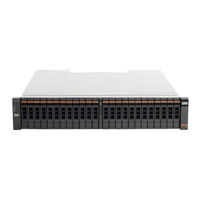IBM Storwize V7000 2076-112 Manuals
Manuals and User Guides for IBM Storwize V7000 2076-112. We have 1 IBM Storwize V7000 2076-112 manual available for free PDF download: Problem Determination Manual
IBM Storwize V7000 2076-112 Problem Determination Manual (314 pages)
Table of Contents
-
-
Figures7
-
Tables9
-
Safety11
-
Emphasis19
-
-
-
-
-
Supply Unit67
-
Power Leds69
-
-
-
-
-
-
Installed107
-
-
-
-
Thermal Grease171
-
VA Safety Cover178
-
VA Safety Cover179
-
-
Event Reporting205
-
-
Bad Block Errors212
-
-
-
Power Leds225
-
-
-
-
-
Restoring Data288
-
Upgrade Recovery289
-
-
Notices299
-
Trademarks301
-
-
Index307
-
-
Advertisement
Advertisement
